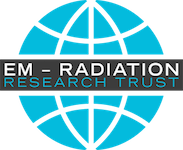A new case study on the health effects of 5G radiation shows that a 5G mast 200 meters from a school causes very high radiation levels at the schoolyard and also inside the classrooms. An eight-year-old boy attending the school gets severe headache that disappears at home where the radiation levels are much lower. This is the eighth case study conducted by Dr. Lennart Hardell and Mona Nilsson from the Swedish Radiation Protection Foundation.
The new case study on the health effects of 5G is published in the scientific journal Annals of Clinical Case Studies. It describes an eight-year-old boy who attends a school where he regularly gets headache. Sometimes the boy also suffers from dizziness and abnormal fatigue. 200 meters from the school there is a 5G mast. Measurements in the school show maximum peak values at the schoolyard of 267 000 μW/m2 and in the classroom of 76 000 μW/m2. These are extremely high levels, far above the levels shown in studies of previous generations of mobile phones to increase the risk of various symptoms, including headache, but also cancer.
In the boy’s home, measurements showed much lower levels of radiation, and in his home the boy does not get headache or if he does, much less severe. After the boy’s mother acquired a beanie made of a material that shields against 5G radiation, which the boy now wears whenever he is at school, the boy no longer suffers from headache at school. He also wears protective clothing outside the school. This indicates that the severe headache occurs when the boy is at school with high 5G radiation without protection, but not when the boy is at home with significantly lower radiation or when he wears a protective cap at school.
Extremely high levels of radiation
The measured levels of radiation at the school are extremely much higher than the levels recommended by scientists and doctors working on the health effects of this form of radiation. At the same time, they are much lower than the levels allowed by most governments around the world, developed by the much criticized organization ICNIRP (see table below) and the FCC in the USA. ICNIRP’s and FCC’s values protect only against immediate heating effects observed when the radiation warms body tissue within one hour. They do not protect against all effects of long term exposure or against all other non-heating effects. Extensive research has demonstrated harmful effects at levels well below the ICNIRP values and the majority of scientists working in this field have been calling for years for the reference value to be tightened to protect against demonstrated health effects (www.emfscientist.org).
| År | Recommendation max (μW/m2) | Organization | Description |
| 1998 | 10 000 000 | ICNIRP | For 2–300 GHz. Average 6 min. Only thermal effects. Excludes protection chronic exposure non-thermal levels |
| 2012 | 3-6 | Bioinitiative 2012 | For non-thermal effects chronic exposure |
| 2016 | 0,1-100 | EuropaEM EMF Guidelines | For non-thermal effects 4 hours per day or more. 900 MHz to 5.6 GHz. Depending on sensitivity and day or night exposure |
| 2023 | 267 53676 590 | This case study | Boy’s schoolyard and classroom. Max peak values |
More children are likely to be affected
Lennart Hardell and Mona Nilsson conclude the following:
“It can be assumed that more children at this school and other schools with 5G antennas in close proximity also suffer from symptoms caused by the increased RF-radiation from 5G. Children are generally more sensitive than adults to harmful environmental factors. This case study underscores the urgent need for a moratorium on 5G deployment (www.emfcall.org, www.5Gappeal.eu)”
There are no studies showing that 5G is not harmful at the levels currently measured or at levels close to the ICNIRP reference value.
Source:
Hardell L. Nilsson M.: An Eight Year Old Boy Developed Severe Headache in A School Close to A Mast with 5G Base Stations. Annals of Clinical Case Studies 2024. Link

